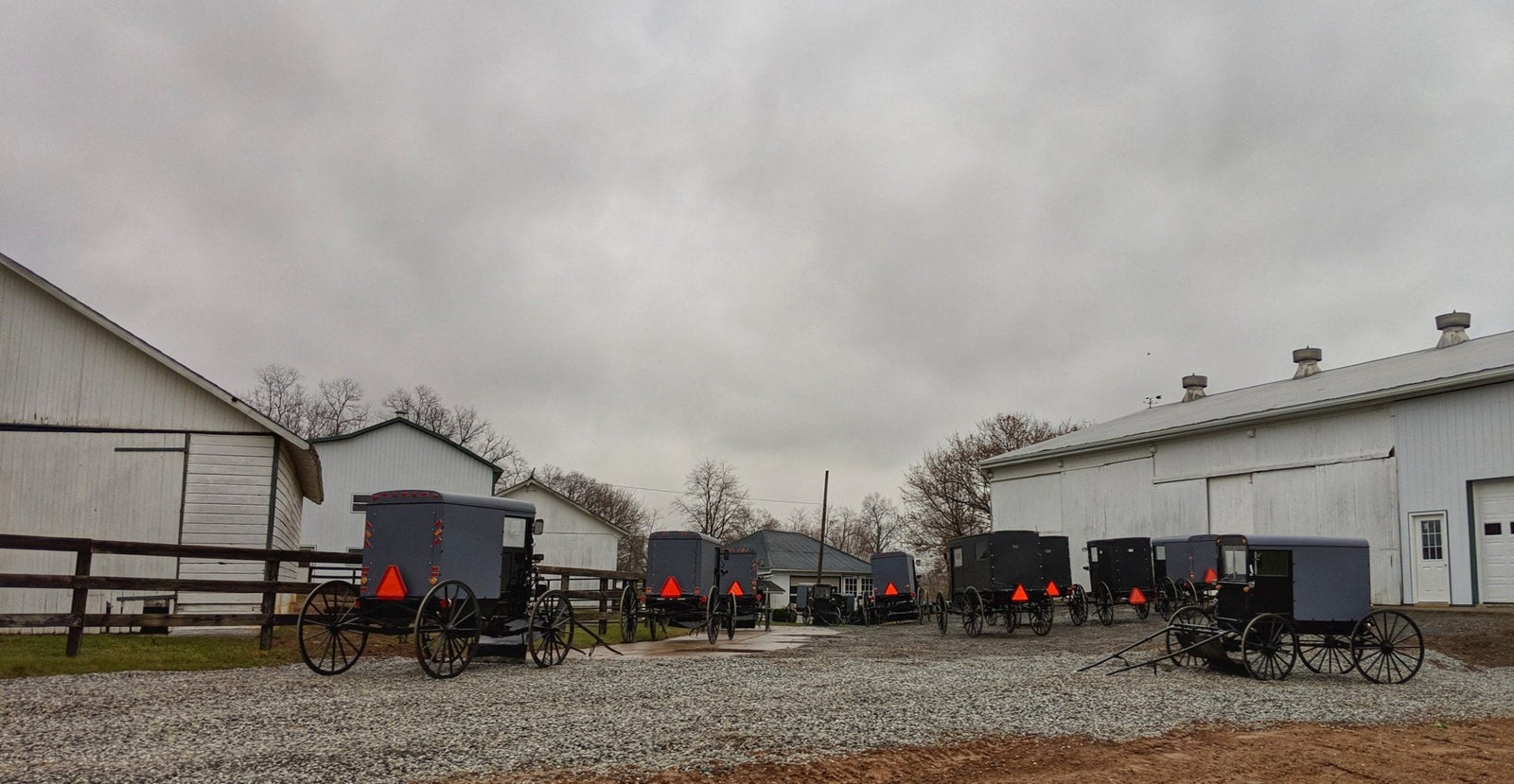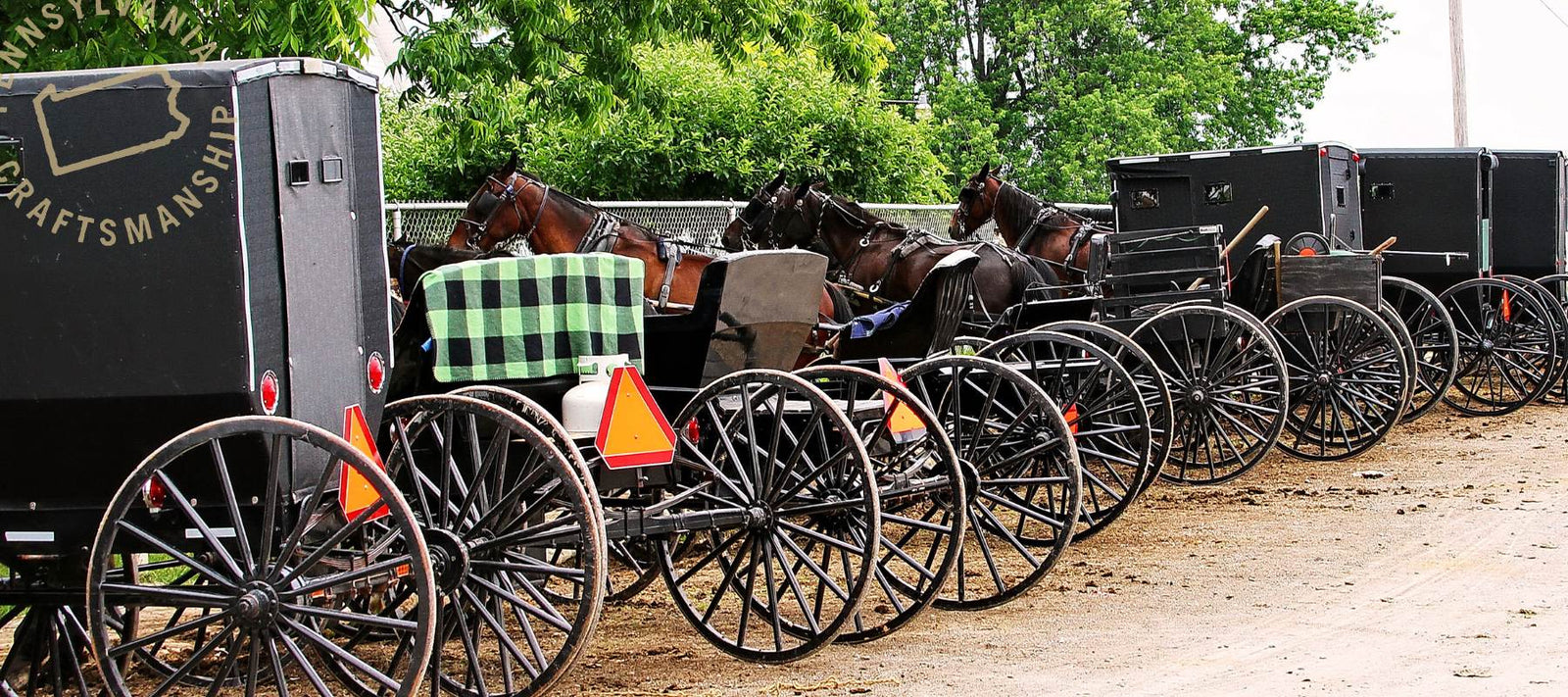Have you ever wondered about the key differences between the Amish and Mennonites? In religious communities, the Amish and Mennonites stand as two distinct threads woven into the fabric of history.
While both groups share Anabaptist roots and a commitment to traditional values, their beliefs, practices, and lifestyles differ meaningfully. These differences reflect their unique identities, from their approach to technology to their craftsmanship in creating timeless items like Amish outdoor furniture and Mennonite quilts. In this exploration, we dive into the heart of these two communities to unravel the unique characteristics that set them apart.
The 5 Key Differences Between Amish and Mennonites
The Amish and Mennonites trace their roots back to the 16th-century Anabaptist movement, a radical reform movement during the Protestant Reformation. The shared foundation of adult baptism and pacifism established a common base for these two groups. Still, as time passed, they developed distinct interpretations and practices.
Let’s examine these differences closer so you can better understand and appreciate how the Amish and Mennonites approach their faith, traditions, and way of life.
1. Technology and Modernity
Amish: Perhaps the most recognizable feature of the Amish community is their aversion to modern technology. To preserve their traditional way of life, the Amish prioritize simple living and reject many conveniences of contemporary life, such as electricity and automobiles.
For example, one of our Amish shops, Lancaster Legacy, uses limited technology to build furniture. However, we produce high-quality Amish furniture items like live edge tables and solid wood dressers, sturdy king-size platform beds with storage, bespoke solid wood chest of drawers, and even unique pieces like Windsor-style chairs made from premium woods such as oak, maple, and cherry wood, combining tradition with exceptional craftsmanship.
Mennonites: While some Mennonite groups also prioritize simplicity and reject certain modern technologies, they tend to have a more flexible approach. Many Mennonites embrace modern conveniences like cell phones, the internet, cars, etc., while maintaining their core values and principles.
Check out:The 5 Major Differences Between Amish And Mennonite Furniture
2. Dress Code
Amish: Known for their distinctive attire, Amish individuals wear plain, modest clothing that reflects their commitment to humility and separation from the world. Men often wear suspenders, broad-brimmed hats, and beards, while women wear dresses with bonnets and aprons.
Mennonites: Mennonite dress varies widely, with some groups adhering to plain dress similar to the Amish and others adopting more modern clothing styles. Overall, modesty remains an essential value across Mennonite communities.
Check out: 5 Ways Amish Schools Are Different
3. Church Services
Amish: Amish church services typically occur in homes, rotating among community members. They conduct their services in Pennsylvania Dutch, a German dialect, emphasizing communal worship, singing, and plain preaching.
Mennonites: Mennonites serve in church buildings, conducting them in English or the local language. Services tend to be more varied in format, with some groups allowing for more individual expression in worship.
Check out: Do the Amish Celebrate Christmas?
4. Engagement With the World
Amish: Amish communities emphasize separation from the outside world to preserve their distinct way of life. They often live in close-knit, rural settlements, limiting interactions with non-Amish individuals.
Mennonites: Mennonites, on the other hand, generally engage more openly with society. Many Mennonite individuals pursue higher education, work outside their communities, and participate in social and charitable activities.
Check out: Amish Holin Platform Bed
5. Evangelism and Outreach
Amish: Evangelism is less emphasized in Amish communities, as their focus is primarily on maintaining their existing way of life and passing down traditions to the next generation.
Mennonites: Many Mennonite groups are more active in evangelism and missionary work, aiming to share their faith and values with a broader audience.
In the intricate tapestry of religious communities, the Amish and Mennonites are threads woven with shared heritage and values, yet distinct in their interpretations, practices, and engagement with the modern world. The Amish prioritize a more straightforward way of life and separation from modernity. At the same time, the Mennonites embrace a range of practices and maintain a more open interaction with the society around them. Understanding these differences enriches our appreciation for the diversity of beliefs and traditions that enrich our global community.
Check out: Our Current Special Offers
Frequently Asked Questions
What is the main difference between Amish and Mennonite?
The main difference lies in their lifestyles: Amish live more secluded lives and avoid modern technology, while Mennonites are more open to integrating technology and modern conveniences into their daily lives.
How to tell if someone is Amish or Mennonite?
You can often distinguish them by their dress and lifestyle; Amish typically wear plain, handmade clothing and avoid technology, while Mennonites may dress modestly but embrace modern transportation and technology.
Do Amish and Mennonites get along?
Yes. Amish and Mennonites generally get along, sharing similar religious roots and values. However, their lifestyles and practices differ significantly.
What are the three (3) types of Amish?
The three main types of Amish are Old Order Amish, who strictly avoid technology; New Order Amish, who are slightly more progressive; and Swartzentruber Amish, the most conservative and traditional group.
What are the types of Mennonites?
Mennonites are categorized into groups like Old Order Mennonites, Conservative Mennonites, Moderate or Mainstream Mennonites, Beachy Mennonites, and Reformed Mennonites, each varying in their use of technology, dress, and adherence to traditional practices.














Leave a comment (all fields required)